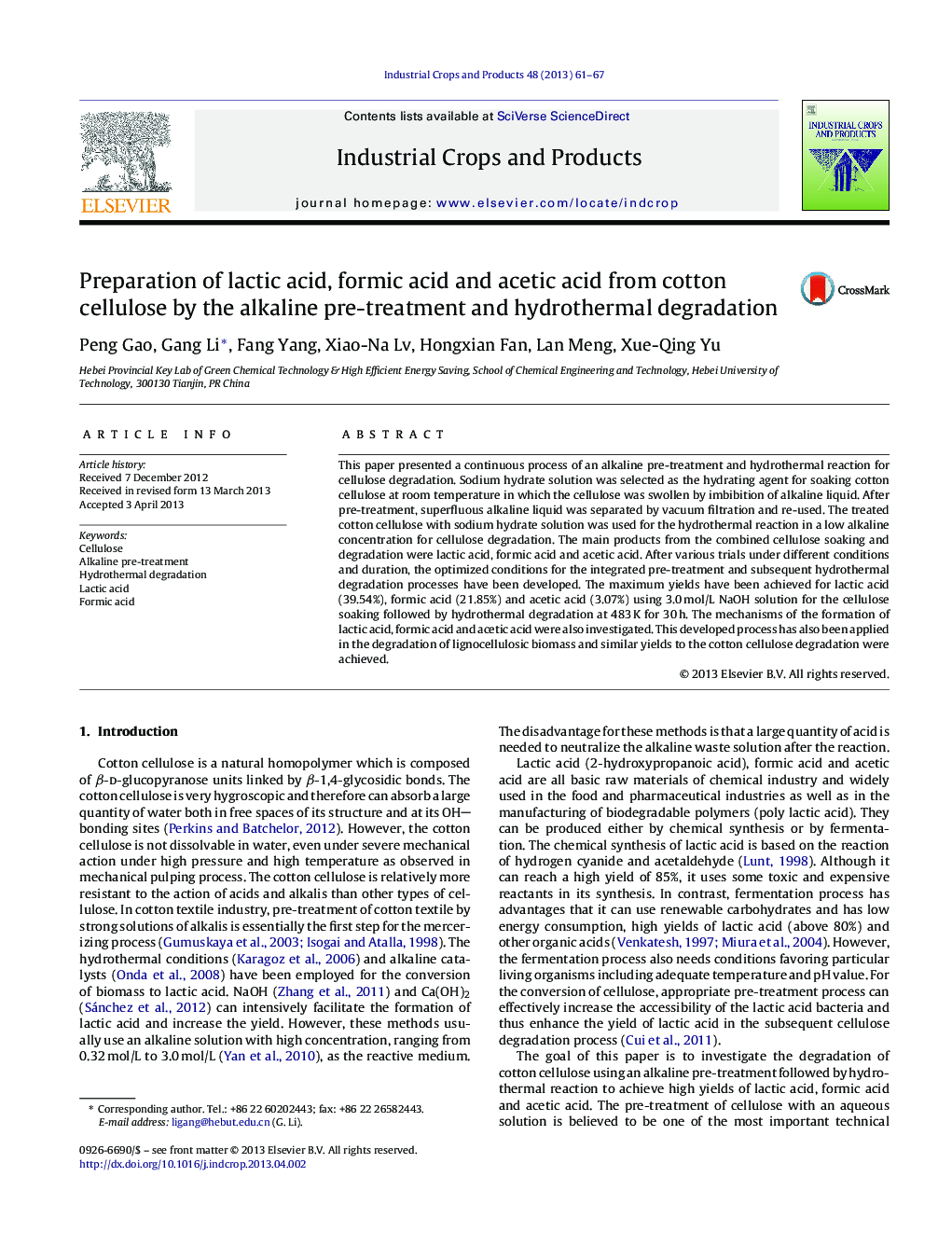| Article ID | Journal | Published Year | Pages | File Type |
|---|---|---|---|---|
| 4513808 | Industrial Crops and Products | 2013 | 7 Pages |
•Alkaline pre-treatment was introduced to improve the degradation of cellulose.•The main products from the process were lactic acid, formic acid and the acetic acid.•The maximum yields of 39.54% for lactic acid, 21.85% for formic acid were achieved.
This paper presented a continuous process of an alkaline pre-treatment and hydrothermal reaction for cellulose degradation. Sodium hydrate solution was selected as the hydrating agent for soaking cotton cellulose at room temperature in which the cellulose was swollen by imbibition of alkaline liquid. After pre-treatment, superfluous alkaline liquid was separated by vacuum filtration and re-used. The treated cotton cellulose with sodium hydrate solution was used for the hydrothermal reaction in a low alkaline concentration for cellulose degradation. The main products from the combined cellulose soaking and degradation were lactic acid, formic acid and acetic acid. After various trials under different conditions and duration, the optimized conditions for the integrated pre-treatment and subsequent hydrothermal degradation processes have been developed. The maximum yields have been achieved for lactic acid (39.54%), formic acid (21.85%) and acetic acid (3.07%) using 3.0 mol/L NaOH solution for the cellulose soaking followed by hydrothermal degradation at 483 K for 30 h. The mechanisms of the formation of lactic acid, formic acid and acetic acid were also investigated. This developed process has also been applied in the degradation of lignocellulosic biomass and similar yields to the cotton cellulose degradation were achieved.
